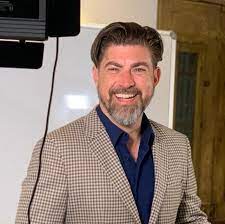
The recent Chief Architect Forum (CAF), a gathering of some of the world’s leading IT architects, was a rousing success for the global IT architect community.
To learn more about what made this event so special and what the takeaways and learnings are for all IT architects, we reached out to two professionals most responsible for its success – Grant Ecker, Chief Architect & Executive Coach at Danaher, and Chairman of the CAF, and Paul Preiss, IASA Global CEO and founder – with three questions.
Question: What was the most pleasant surprise(s) about the CAF?
Ecker: I loved how everyone came together and brought their “A game” contributions to make the event incredible. Whether it was Stephen Cohen inspiring us with a story that helped to articulate the unique blend of the Chief Architect’s role that blends between executive leadership (top hats) vs technical leadership (army helmets), or Jim Wilt sharing his home with us and take us in off roading gator rides through his fantastic prairie grounds, to even finding a way to sneak in a DJ set to share some of my music with the group.

Everyone leaned in to make the event a hit. I was extremely grateful that four executive leaders who inspire me were able to join us as well to inspire all of us on the art of the possible for our profession and our careers.
Preiss: I was completely unsurprised by how well the group immediately connected with each other. The natural vibe that architects have which each other was present, but also the matched needs and the shared experiences allowed the chief architects to multiply that effect. I was unsurprised that the level of presentation, the level of professionalism in the room was unparalleled. The CAF board spends a great deal of time reviewing applications and interviewing potential members, so this was to be expected. But what surprised me the most? The fact that I could get access to these people and hear their stories. Most of them simply are not accessible. They are busy and driven people, so to have this many leaders in a room was just mind-blowing.
Question: What were some of the biggest takeaways/learnings for attendees at the CAF?
Ecker: First and foremost, we discovered that we want to build a community together. We have so much to learn and benefit from our collaboration as peers – which is so rare today without an organizing vendor that is seeking to sell us something.
Our time together allows us to create value together that helps us solve the problems in front of us at our organizations and anchors us back to our imperatives to:
- Learn from our peers
- Develop our talent
- Advance our profession
- Build our networks
Preiss: The shared set of challenges and opportunities facing chief architects. The extreme rate of adoption of technology requires chief architects to truly dance on a hairpin to keep up with demand. Also, the unbelievably similar stories related to maturity of practices and the needs of employers

for more architecture work. I learned a huge amount in a number of key technology adoption areas and most importantly the real-world work necessary to see them implemented effectively. Some of these included:
- The discussion of cloud adoption to achieve a truly cloud native design and the decades of effort that have to go into it.
- The deep dive into practical business cases for AI and its application throughout the stack, plus the things it doesn’t do well.
- The fact that so many architecture practices share needs in a) community of practice, b) education and career path and c) engagement maturity.
Overall, I realized just how needed chief architects are and how much opportunity for sharing among organizations really exists.
Question: How will this CAF and future CAFs push the industry in a positive direction?
Ecker: Referencing our purpose to test, challenge and support the state of the art and science for Business and Technology Architecture and its evolution over time: Our collaboration together drives us towards professionalization that creates a broader impact on our world. We can create a quality and consistency of best practices and standards in architecture leadership and delivery that is growing in importance in our society. More and more we live in a world where well architected solutions keep patients safe, airplanes in the air, and our systems of commerce intact – to only touch on a few areas. Imagine what’s possible when we band together to share how we can best address these challenges with robust and sustainable solutions.
Preiss: The CAF is much more than just a thought leadership community. It is a bi-directional conversation between architects and their stakeholders and other industry leaders. With presentations from CIOs, executive recruiting and vendor representatives, the CAF is showing how it can influence the influencers, employers, and state of the industry. With shared practice methods and deep discussions about driving best practice throughout the member organizations the CAF is leap-frogging the maturity each company would achieve alone. This truly sets the stage for improvements in delivery, strategy, and overall corporate architecture maturity. Within a few years the CAF word on the profession will influence the entire field.
Question: Other thoughts?
Ecker: If you are a chief architect, consider applying to join us with no application or membership fee at https://chiefarchitectforum.org/apply-to-join/ Let’s build something amazing together!
